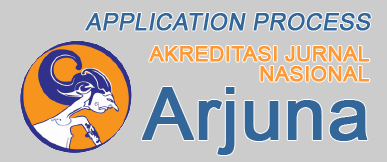Stunting in Focus: Unraveling the Trends and Prevalence Among Children in Maluku Utara Province (2019-2023)
DOI:
https://doi.org/10.62394/scientia.v2i2.83Keywords:
maluku utara, stunting trends, child development, public health interventionsAbstract
Maluku Utara, an Indonesian province with captivating natural landscapes, cultural richness, and abundant resources, faces a pressing issue of stunting among children. Stunting, a chronic condition affecting growth and development, poses a significant public health challenge. This study examines stunting trends in Maluku Utara from 2019 to 2023, emphasizing its consequences on physical and cognitive development. Despite national targets to reduce stunting, Maluku Utara encounters unique challenges. This research aims to uncover the specific context by analyzing trends, identifying high-prevalence regions, and exploring contributing factors. The study's significance lies in informing targeted interventions and policies tailored to Maluku Utara's conditions, aiding progress toward national reduction goals. Utilizing quantitative methods, the research relies on secondary data from the Ministry of Health of the Republic of Indonesia, applying descriptive statistical analysis. The four-year data reveals fluctuations in stunting prevalence, with a resurgence in 2023, particularly in Halmahera Utara District. District-level analysis exposes disparities, emphasizing the need for continuous and focused efforts, especially in high-prevalence areas. This research addresses knowledge gaps, providing insights into stunting dynamics, and facilitating culturally sensitive interventions. By understanding trends and underlying factors, stakeholders can formulate effective strategies to combat stunting in Maluku Utara, contributing to broader national efforts for a healthier and more prosperous future for the region's children.
Downloads
References
Amran, A. N. (2023). Pemberdayaan Kader dan Edukasi Kepada Ibu Hamil dalam Upaya Pencegahan Stunting Pada Balita di Wilayah Puskesmas Kalumata, Kota Ternate. BARAKTI: Journal of Community Service, 1(2), 38–43.
Bhutta, Z. A., Akseer, N., Keats, E. C., Vaivada, T., Baker, S., Horton, S. E., Katz, J., Menon, P., Piwoz, E., & Shekar, M. (2020). How countries can reduce child stunting at scale: lessons from exemplar countries. The American Journal of Clinical Nutrition, 112(Supplement_2), 894S-904S.
Bloem, M. W., de Pee, S., Le Hop, T., Khan, N. C., Laillou, A., Minarto, Moench-Pfanner, R., Soekarjo, D., Soekirman, & Solon, J. A. (2013). Key strategies to further reduce stunting in Southeast Asia: Lessons from the ASEAN countries workshop. Food and Nutrition Bulletin, 34(2_suppl1), S8–S16.
Branca, F., & Ferrari, M. (2002). Impact of micronutrient deficiencies on growth: the stunting syndrome. Annals of Nutrition and Metabolism, 46(Suppl. 1), 8–17.
Caulfield, L. E., Richard, S. A., Rivera, J. A., Musgrove, P., & Black, R. E. (2006). Stunting, wasting, and micronutrient deficiency disorders. Disease Control Priorities in Developing Countries. 2nd Edition.
Contento, I. R. (2007). Nutrition education: linking research, theory, and practice.
Contento, I. R., Manning, A. D., & Shannon, B. (1992). Research perspective on school-based nutrition education. Journal of Nutrition Education, 24(5), 247–260.
De Onis, M., & Branca, F. (2016). Childhood stunting: a global perspective. Maternal & Child Nutrition, 12, 12–26.
Demsa Simbolon, S. K. M. (2019). Pencegahan stunting melalui intervensi gizi spesifik pada ibu menyusui anak usia 0-24 bulan. Media Sahabat Cendekia.
Dewey, K. G., & Begum, K. (2011). Long‐term consequences of stunting in early life. Maternal & Child Nutrition, 7, 5–18.
Engle, P. L., Bentley, M., & Pelto, G. (2000). The role of care in nutrition programmes: current research and a research agenda. Proceedings of the Nutrition Society, 59(1), 25–35.
Gross, R., Schultink, W., & Sastroamidjojo, S. (1996). Stunting as an indicator for health and wealth: an Indonesian application. Nutrition Research, 16(11–12), 1829–1837.
Harangozó, G., & Zilahy, G. (2015). Cooperation between business and non-governmental organizations to promote sustainable development. Journal of Cleaner Production, 89, 18–31.
Illner, A. K., Freisling, H., Boeing, H., Huybrechts, I., Crispim, S. P., & Slimani, N. (2012). Review and evaluation of innovative technologies for measuring diet in nutritional epidemiology. International Journal of Epidemiology, 41(4), 1187–1203.
Kamal, S. M. (2011). Socio-economic determinants of severe and moderate stunting among under-five children of rural Bangladesh. Malaysian Journal of Nutrition, 17(1).
Kelly, J. T., Collins, P. F., McCamley, J., Ball, L., Roberts, S., & Campbell, K. L. (2021). Digital disruption of dietetics: are we ready? Journal of Human Nutrition and Dietetics, 34(1), 134–146.
Leroy, J. L., & Frongillo, E. A. (2019). Perspective: what does stunting really mean? A critical review of the evidence. Advances in Nutrition, 10(2), 196–204.
Lytle, L. A. (1994). Nutrition Education for School-Aged Children: A Review of Research.
Menon, P., Ruel, M. T., & Morris, S. S. (2000). Socio-economic differentials in child stunting are consistently larger in urban than in rural areas. Food and Nutrition Bulletin, 21(3), 282–289.
Murray, A., Haynes, K., & Hudson, L. J. (2010). Collaborating to achieve corporate social responsibility and sustainability? Possibilities and problems. Sustainability Accounting, Management and Policy Journal, 1(2), 161–177.
Onyango, A. W. (2013). Promoting healthy growth and preventing childhood stunting: a global challenge. Maternal & Child Nutrition, 9(Suppl 2), 1.
Organization, W. H. (2003). Skills for health: Skills-based health education including life skills: An important component of a child-friendly/health-promoting school. World Health Organization.
Organization, W. H. (2014). Global nutrition targets 2025: Stunting policy brief. World Health Organization.
Organization, W. H. (2018). Reducing stunting in children: equity considerations for achieving the Global Nutrition Targets 2025.
Perumal, N., Bassani, D. G., & Roth, D. E. (2018). Use and misuse of stunting as a measure of child health. The Journal of Nutrition, 148(3), 311–315.
Prendergast, A. J., & Humphrey, J. H. (2014). The stunting syndrome in developing countries. Paediatrics and International Child Health, 34(4), 250–265.
Sangadji, Suwandi S., Febriyani E. Supriatin, Iin Marliana, Afkar, Andi Paerah, and Firdaus Y. Dharta. 2022. “Metodologi Penelitian.” OSF Preprints. July 5. osf.io/ywemh
Sangadji, S. S. (2023). Management research methods. PROCURATIO: Jurnal Manajemen & Bisnis, 2(1), 43–44.
Syafrawati, S., Lipoeto, N. I., Masrul, M., Novianti, N., Gusnedi, G., Susilowati, A., Nurdin, A., Purnakarya, I., Andrafikar, A., & Umar, H. B. (2023). Factors driving and inhibiting stunting reduction acceleration programs at district level: A qualitative study in West Sumatra. Plos One, 18(3), e0283739.
Taqwin, T., Ramadhan, K., Hadriani, H., Nasrul, N., Hafid, F., & Efendi, F. (2020). Prevalence of stunting among 10-year old children in Indonesia. Journal of Global Pharma Technology, 12(2), 768–773.
Tariku, E. Z., Abebe, G. A., Melketsedik, Z. A., & Gutema, B. T. (2018). Prevalence and factors associated with stunting and thinness among school-age children in Arba Minch Health and Demographic Surveillance Site, Southern Ethiopia. PloS One, 13(11), e0206659.
Waddell, S. (2017). Societal learning and change: How governments, business and civil society are creating solutions to complex multi-stakeholder problems. Routledge.
Wang, X., Höjer, B., Guo, S., Luo, S., Zhou, W., & Wang, Y. (2009). Stunting and ‘overweight’in the WHO Child Growth Standards–malnutrition among children in a poor area of China. Public Health Nutrition, 12(11), 1991–1998.
Yalew, B. M., Amsalu, F., & Bikes, D. (2014). Prevalence and factors associated with stunting, underweight and wasting: a community based cross sectional study among children age 6-59 months at Lalibela Town, Northern Ethiopia. J Nutr Disorders Ther, 4(147), 509–2161.
Young, M. F., & Martorell, R. (2013). The public health challenge of early growth failure in India. European Journal of Clinical Nutrition, 67(5), 496–500.
Downloads
Published
How to Cite
Issue
Section
Most read articles by the same author(s)
- Diana Sukmawati Hasan, Suwandi S. Sangadji, Fundamentals in Crafting Research and Community Service Articles , SCIENTIA: Journal of Multi Disciplinary Science: Vol. 3 No. 1 (2024): January - June
- Diana Sukmawati Hasan, Sinta Muhammad, Exploring Two Years of Stunting Trends: Insights from Tidore Kepulauan , SCIENTIA: Journal of Multi Disciplinary Science: Vol. 3 No. 1 (2024): January - June




















